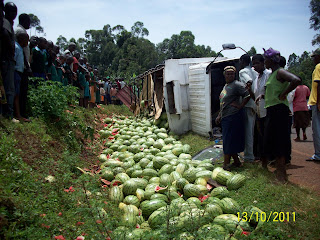The world is experiencing massive population growth which
has led to struggle for resources as everyone eyes a piece of land to call
his/her own.
This has led to massive land subdivision that has rendered
productivity of land to diminish with time.
Viability of land has become an issue as the human race
finds a place to shelter as well as farm for food to sustain their livelihood
in this world.
In a previous post, I mentioned on why it is important to
use farmyard manure on your farm so as to supply essential nutrients to support
healthy crop growth.
 |
| A massively subdivided region in Kisii, Kenya |
Today, I am emphasizing on the need to rotate the crops on
your farm so as to give it time to recover the nutrients used by the previous
crop.
Each crop requires specific nutrients from the soil and if
crops are not rotated, that particular nutrient will be exhausted leaving you
with a poor yield year in year out.
Even if the crops you rotate are not what you normally use
as your stable food, you can sell it and purchase the food you prefer.
Growing one crop like a marathon on our farm will leave you
with very little every other season.
So go ye and rotate crops on your farm.





